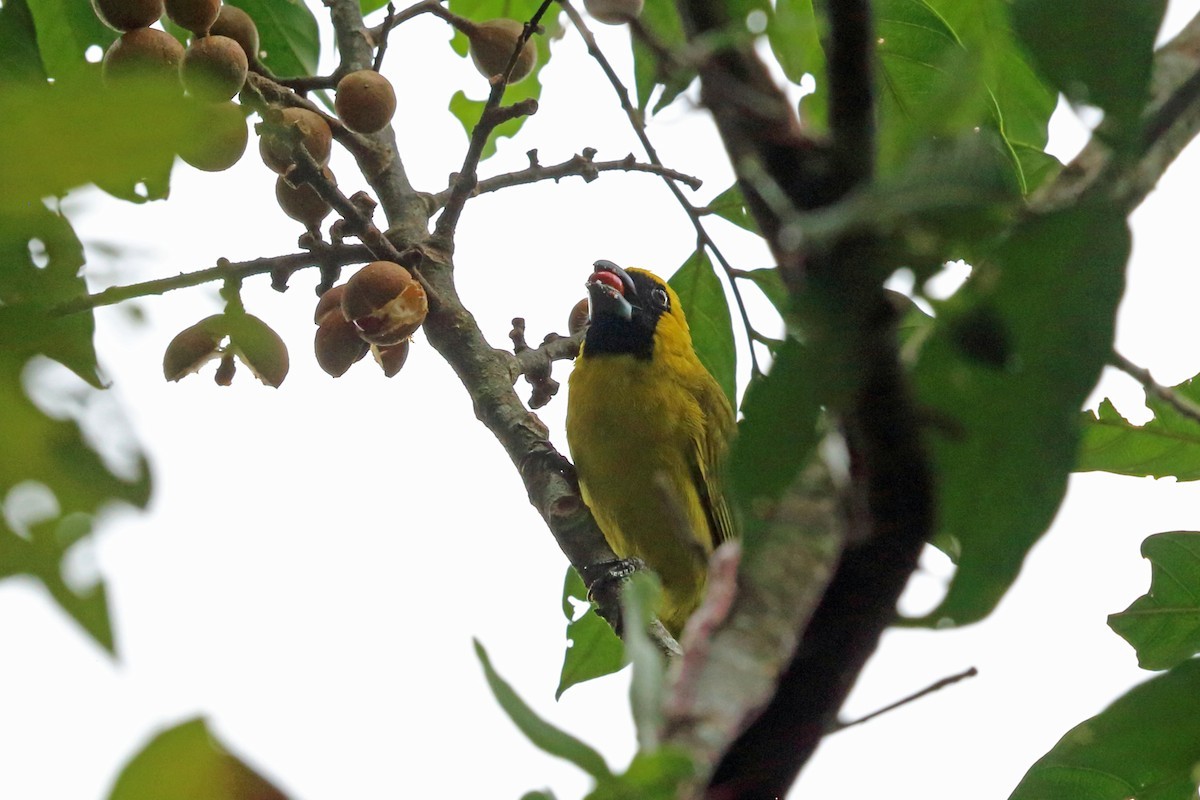Yellow-green Grosbeak
A species of Black-faced and Yellow-green Grosbeaks Scientific name : Caryothraustes canadensis Genus : Black-faced and Yellow-green Grosbeaks
Yellow-green Grosbeak, A species of Black-faced and Yellow-green Grosbeaks
Botanical name: Caryothraustes canadensis
Genus: Black-faced and Yellow-green Grosbeaks
Content
Description General Info
 Photo By Nigel Voaden
Photo By Nigel Voaden Description
The yellow-green grosbeak (Caryothraustes canadensis) is a species of grosbeak in the family Cardinalidae. In 1760 the French zoologist Mathurin Jacques Brisson included a description of the yellow-green grosbeak in his Ornithologie based on a specimen collected in Cayenne in French Guiana. He used the French name Le Gros-bec de Cayenne and the Latin name Coccothraustes Cayanensis. Although Brisson coined Latin names, these do not conform to the binomial system and are not recognised by the International Commission on Zoological Nomenclature. When in 1766 the Swedish naturalist Carl Linnaeus updated his Systema Naturae for the twelfth edition he added 240 species that had been previously described by Brisson. One of these was the yellow-green grosbeak. Linnaeus included a terse description, used the binomial name Loxia canadensis and cited Brisson's work. Linnaeus mistakenly claimed that the species occurred in Canada rather than Cayenne and introduced the specific name canadensis for Canada where the bird does not occur. This species is now placed in the genus Caryothraustes that was introduced by the German naturalist Ludwig Reichenbach in 1850. There are four subspecies. It is found in Brazil, Colombia, French Guiana, Guyana, Panama, Suriname, and Venezuela. Its natural habitats are subtropical or tropical moist lowland forest and heavily degraded former forest. 
Size
19 cm
Nest Placement
Tree
Feeding Habits
Yellow-green Grosbeak primarily consumes a mix of insects like beetles and cockroaches, including their egg cases, as well as berries. This varied diet showcases yellow-green Grosbeak's adaptability in foraging for both animal and plant food sources.
Habitat
Yellow-green Grosbeak dwell primarily in lowland humid forests and the borders of such forests, especially where rainfall is abundant. Typically found at elevations from sea-level up to 1000 meters in foothills and at lower altitudes, mostly below 250 meters, within broad tropical regions. The variant known as race simulans prefers the humid forest habitats situated between 250 and 1250 meters elevation. Their territories encompass the expansive and biodiverse neotropical realm.
Dite type
Granivorous
General Info
Feeding Habits
Bird food type

 Photo By Nigel Voaden
Photo By Nigel Voaden